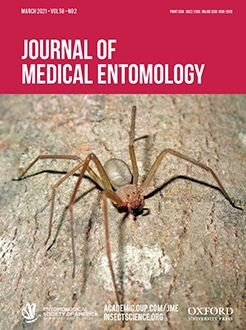Pesticide resistance in arthropod vectors of disease agents is a growing issue globally. Despite the importance of resistance monitoring to inform mosquito control programs, no regional monitoring programs exist in the United States. The Northeastern Regional Center for Excellence in Vector-Borne Diseases (NEVBD) is a consortium of researchers and public health practitioners with a primary goal of supporting regional vector control activities. NEVBD initiated a pesticide resistance monitoring program to detect resistant mosquito populations throughout the northeastern United States. A regionwide survey was distributed to vector control agencies to determine needs and refine program development and in response, a specimen submission system was established, allowing agencies to submit Culex pipiens (L.) (Diptera:Culicidae) and Aedes albopictus (Skuse) (Diptera: Culicidae) for pesticide resistance testing. NEVBD also established larvicide resistance diagnostics for Bacillus thuringiensis israelensis (Bti) and methoprene. Additional diagnostics were developed for Cx. pipiens resistance to Lysinibacillus sphaericus. We received 58 survey responses, representing at least one agency from each of the 13 northeastern U.S. states. Results indicated that larvicides were deployed more frequently than adulticides, but rarely paired with resistance monitoring. Over 18,000 mosquitoes were tested from six states. Widespread low-level (1 × LC-99) methoprene resistance was detected in Cx. pipiens, but not in Ae. albopictus. No resistance to Bti or L. sphaericus was detected. Resistance to pyrethroids was detected in many locations for both species. Our results highlight the need for increased pesticide resistance testing in the United States and we provide guidance for building a centralized pesticide resistance testing program.
How to translate text using browser tools
31 October 2020
NEVBD Pesticide Resistance Monitoring Network: Establishing a Centralized Network to Increase Regional Capacity for Pesticide Resistance Detection and Monitoring
James C. Burtis,
Joseph D. Poggi,
Joseph R. McMillan,
Scott C. Crans,
Scott R. Campbell,
Amy Isenberg,
Janice Pulver,
Patti Casey,
Kerry White,
Craig Zondag,
John R. Badger,
Russell Berger,
John Betz,
Stacey Giordano,
Malgorzata Kawalkowski,
John L. Petersen,
Gregory Williams,
Theodore G. Andreadis,
Philip M. Armstrong,
Laura C. Harrington
ACCESS THE FULL ARTICLE
It is not available for individual sale.
This article is only available to subscribers.
It is not available for individual sale.
It is not available for individual sale.

Journal of Medical Entomology
Vol. 58 • No. 2
March 2021
Vol. 58 • No. 2
March 2021
Aedes
bioassay
Culex
insecticide
pesticide resistance




